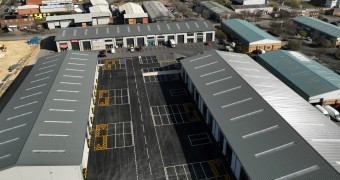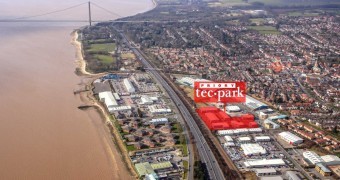WHAT ARE CDM REGULATIONS?
The Construction (Design & Management) Regulations, or CDM 2015, are designed to cover health, safety and welfare in the construction industry, and apply to all construction projects to manage potential risks from beginning to end. CDM regulations define 3 stages involved in construction projects, including Pre-Construction, Construction, and the Post-Construction phase.
When do CDM regulations apply?
CDM regulations can apply to a range of construction projects, including the following examples:
- Demolition works
- Refurbishment
- New builds
- Extensions
- Conversions
- Repair and maintenance
Expert knowledge and practical advice
Operating in a network of offices across the nation, our team of over 60 building surveyors we can provide a wide range of consultancy services. We can provide a solution for your commercial property requirements.
What is required under CDM regulations?
CDM regulations require that projects are carefully planned with health and safety in mind from the earliest stage. Certain participants in each project become duty-holders, and take responsibility for the CDM requirements.
The regulations are intended to help those involved:
- Carefully plan projects so any risk to health and safety is minimised
- Co-ordinate with others involved in the project, and co-operate accordingly
- Ensure a suitably skilled workforce is employed at each stage
- Assess and fully understand the risks
- Communicate these risks to others on the project, as well as the control measures that are to be put in place
Each of these project types require specific notifications and actions to take place in order to be compliant with CDM regulations.
What are the 5 stages of CDM Regulations?
The official guidance from the Health and Safety Executive includes the following as a summary:
Part 1- General duties and application, which summarises the duties and responsibilities of clients, contractors, and designers.
Part 2- Client duties, relating to the appointment of required dutyholders, such as principlal designers and principal contractors.
Part 3- Health and safety duties and roles, relating to the duties of contractors, principal contractors, designers, and principal designers.
Part 4- General requirements for construction sites, relating to site security, fire safety, and emergency procedures.
Part 5- Transitional arrangements and revocations, which revokes the CDM 2007 regulations and includes transitional arrangements for moving from previous 2007 legislation.
Who are the duty-holders under CDM and what are their main obligations?
Clients
CDM regulations changed in 2015, when greater responsibility was placed on the client. Part of a client’s duty under the regulations is to notify the Health and Safety Executive (HSE) that construction work is taking place, and to ensure the management of health and safety on-site.
Clients can be divided into commercial and domestic, but domestic clients don’t generally take on these duties. They naturally pass to other duty-holders, such as the contractor, principal contractor, or designer.
Designers
The Health and Safety Executive (HSE) define a designer as, “an organisation or individual whose business involves preparing or modifying designs for construction projects, or arranging for, or instructing, others to do this.”
Designers can include architects, surveyors, engineers, and interior designers, and their duties include eliminating the risk to the health and safety for anyone involved in the project, and effectively managing any risks that cannot be eliminated.
Principal contractors
Where more than one contractor is involved in a project, a principal contractor will be appointed to control health and safety during construction. Their duties include formulating a plan for the construction phase, liaising with other duty-holders to manage the risks, and consulting with workers regarding their health and safety.
Contractors
A contractor is any person or business employing construction workers, or managing construction work. Under CDM regulations, contractors must make sure the workers they employ or hire have the knowledge, skills and training needed to undertake the tasks assigned, and supervise them during the construction phase.
Workers
Workers are employed or hired by the contractor or principal contractor, and can include plumbers, electricians, labourers, scaffolders, painters and decorators. Their duties under CDM include following the rules and procedures laid down, co-operating with other duty-holders, and reporting any risks as they arise.
What happens if CDM regulations are breached?
Failing to comply with CDM regulations can result in enforcement action by the Health and Safety Executive (HSE). This can include prosecution. and depending on the nature of the breach, may range from financial penalties to imprisonment of individuals responsible.
How to ensure your project is compliant
We offer Principal Design solutions and Health & Safety Advisory Services spanning all RIBA Stages, ensuring that your duties and responsibilities to comply with CDM Regulations and other associated Legislation is a swift and smooth process.
Our Principal Designers are an experienced combination of RICS-qualified Surveyors and IOSH-Health & Safety Specialists, giving you confidence that not only are we passionate, but that we are also professionally recognised for our skills and techniques.
Operating across the UK, our expert team is available from before your project has even started, working with clients, project managers and principal contractors to identify and overcome any risks within your design or construction processes. Contact our team using the form below and we will provide a solution for your CDM management requirements.
Experts in commercial property
Contact our team of leading auctioneers, property agents, and RICS-qualified surveyors today.












